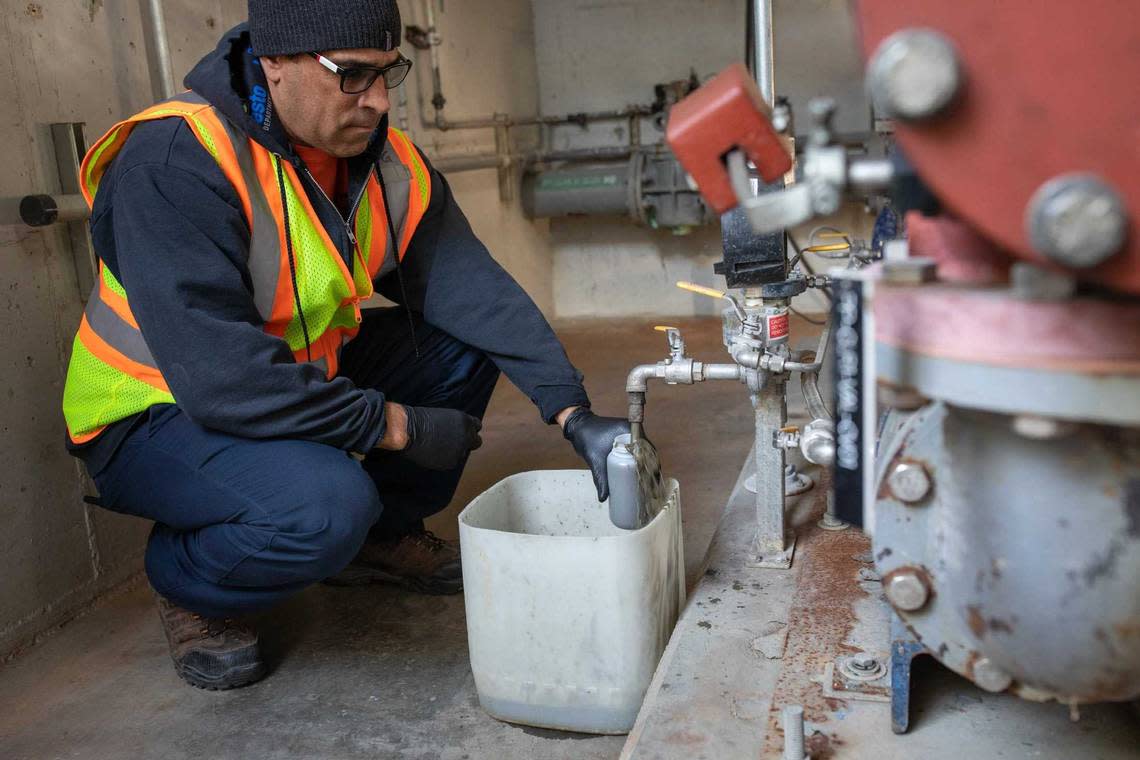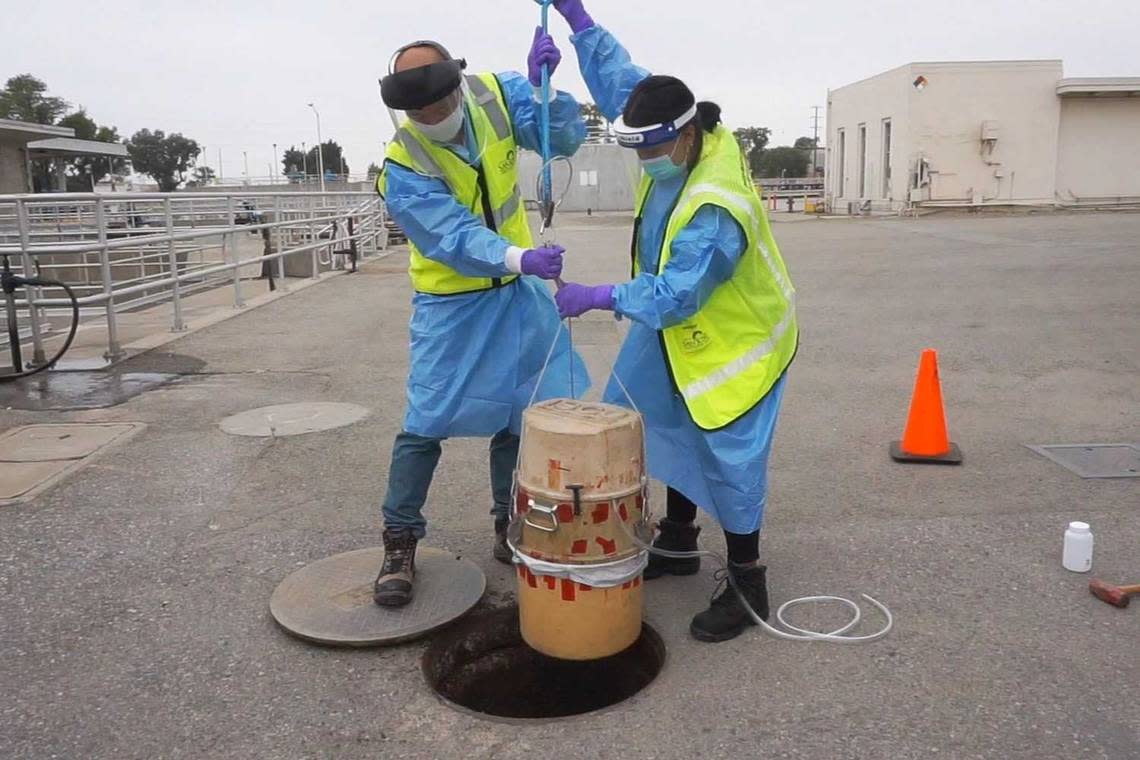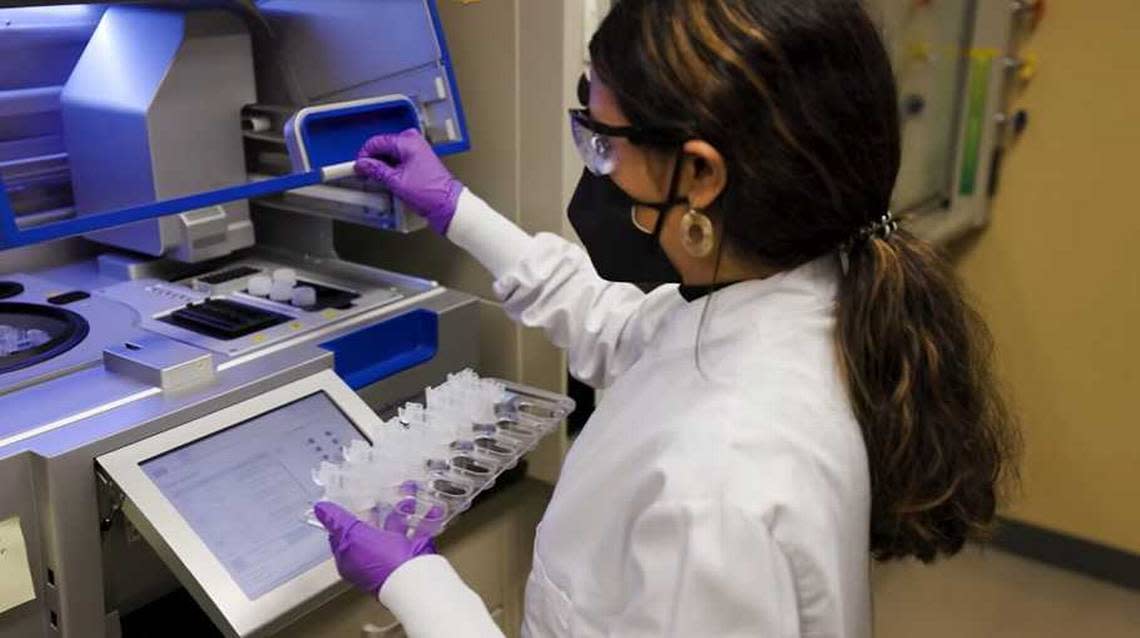California’s COVID levels appear as high as ever: ‘The sewage never lies’
As COVID-19 testing rates have plummeted, one tool is becoming increasingly important for understanding the state of the pandemic: sewage surveillance.
Regional wastewater paints a stark picture of a pandemic that is far from over. While the state’s testing program shows coronavirus case rates to be dropping across much of Northern California, wastewater analysis indicates that in many places, viral spread this month rivals or even exceeds the original omicron surge that swept through the country in January, creating record infections.
According to data from the Sewer Coronavirus Alert Network — a wastewater analysis program based at Stanford University — the concentration of COVID-19 in the wastewater in areas of Northern California such as Davis and western San Francisco have this June exceeded the levels they were in the original omicron surge that occurred in January.
In Sacramento, the numbers are slightly milder, with wastewater COVID-19 levels peaking this June at just over half of what they were in January.
This wastewater analysis stands in stark contrast to metrics often cited when measuring virus spread, such as case rate per 100,000 residents. Looking at case rates reported by the California Department of Public Health, it seems that Sacramento County’s June surge was only 17% of what it saw in January. Yolo County and San Francisco — both of which, according to wastewater analysis, have seen COVID spread at just as high or higher levels as January — reported case rates peak this month at just 20% and 23% of the January surge, respectively.
But public health officials agree that sewage, rather than testing numbers, is telling the true story of the state of COVID-19.

Yolo County health officer Dr. Aimee Sisson said that she and other county officials are operating under the assumption that viral spread is as high now, if not higher, than it was during the January omicron surge. She believes that cases in Yolo County likely exceed 200 per 100,000 residents, as they did in January — rather than 40.8, as CDPH reported Tuesday.
Similarly, Christoph Dobson, the general manager of the Sacramento Regional County Sanitation District, or Regional San, a sewage treatment plant that collects Sacramento County sewage samples that go to Stanford and other wastewater analysis programs, said that current COVID-19 levels appear to be “one half to two-thirds” what they were in January in the county — a departure from the 17% indicated by testing data.
The discrepancy between the sewage and the case rates can be attributed to a significant drop in COVID-19 testing statewide. California reports case rates based on PCR test results, and as more residents opt to take at-home rapid tests or forego testing entirely, that number becomes less reflective of the virus’s spread.
Sewage, however, will always capture the amount of virus present in the community, even if people are not testing.
“Our sewage surveillance, it is sort of foolproof from that sense,” Dobson said. “I always like to say ‘the sewage never lies,’ because it’s always going to come down to the plant.”

Sisson concurred, saying that “wastewater is certainly a more accurate indicator of the amount of virus spreading in the communities than the case rates are right now.”
As an example, at UC Davis, where biweekly testing is mandatory, the Davis Enterprise reported that case rates are nearly as high as they were in January. In the rest of Yolo County, where testing is voluntary, case rates are nowhere near that level.
The California Department of Public Health has sponsored a pandemic wastewater analysis program since December 2020. In a statement, the agency said that it plans to expand its wastewater surveillance program to serve more areas, especially with testing numbers in decline.
“As home antigen testing increases or overall testing decreases over time, wastewater can help continue to provide understanding of community COVID-19 disease activity,” the agency said.
How does wastewater analysis work?
Colleen Naughton, a professor and researcher at UC Merced who runs an international wastewater analysis dashboard, said that wastewater analysis for public health purposes had been done before with polio outbreaks, but “really increased” during the COVID-19 pandemic.
Wastewater analysis is conducted in California by a number of different sources, including CDPH’s labs, Stanford’s SCAN program and programs such as Healthy Central Valley Together. Data from many of these sources is aggregated in a state dashboard.
Sacramento’s Regional San, which collects sewage from Sacramento County and West Sacramento, sends samples to SCAN and Biobot, a national wastewater monitor. Samples go to Stanford every day, Dobson said, and come from the combined sewage of Regional San’s 1.6 million customers.
The sewage coming from a large geographic area, rather than a particular household or neighborhood, can give “a different angle on the pandemic,” Dobson said.

Wastewater analysis does come with some limitations. Because it is not clear how much virus humans shed into their waste, wastewater COVID levels cannot be translated into case numbers. This makes wastewater best for “examining trends,” according to CDPH.
The amount of virus that is shed into human waste may also vary based on variant, Naughton said, so it is hard to use wastewater as a basis for comparison across the entire pandemic.
“(Wastewater) is another important tool in the toolbox,” Naughton said. “It’s not like a silver bullet; you shouldn’t use it alone.”
But despite the limitations, Naughton agreed that wastewater presents a more accurate picture of the pandemic than case rates do right now. In certain spots like Davis, viral spread is likely as high, if not higher, than they were during January’s record-breaking surge, she agreed.
Is there cause for concern?
According to Sisson, it is not yet time to panic. but the elevated COVID levels in wastewater should be “cause for concern” among area residents.
“There is a lot of virus in the community and that means it is important to take steps to protect yourself against infection and against severe disease if you do get infected,” she said.
But Sisson and Naughton both noted that the most recent surge has come with limited hospitalizations and deaths. Statewide and in the Sacramento region, hospitalization and death rates are significantly lower than what they were in January.
This “decoupling,” as Sisson put it, of case numbers and hospitalizations has made this recent wave less catastrophic than the original omicron wave, even if viral spread might be just as high.
The relatively low rates of hospitalization and deaths is what has kept Yolo County from reinstituting its mask mandate, Sisson said, and is likely part of what has kept others from doing the same.
“We’re in a different phase of the pandemic,” Sisson said. “Yes, we have a lot of infections, but they are not wreaking havoc on our healthcare system. They are not causing deaths like they were earlier.”
